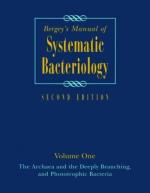|
This section contains 296 words (approx. 1 page at 300 words per page) |
Genes that code for vital cellular functions are highly conserved through evolutionary time, and because even these genes experience random changes over time, the comparison of such genes allows the relatedness of different organisms to be assessed. American microbiologist Carl Woese and his colleagues obtained sequences of the genes coding for RNA in the subunit of the ribosome from different organisms to argue that life on Earth is comprised of three primary groups, or domains. These domains are the Eukarya (which include humans), Bacteria, and Archaea.
While Archae are microorganisms, they are no more related to bacteria than to eukaryotes. They share some traits with bacteria, such as having a single, circular molecule of DNA, the presence of more mobile pieces of genetic material called plasmids, similar enzymes for producing copies of DNA. However, their method of protein production and organization of their genetic material bears more similarity to eukaryotic cells.
The three domains are thought to have diverged from one another from an extinct or as yet undiscovered ancestral line. The archae and eukarya may have branched off from a common ancestral line more recently than the divergence of these two groups from bacteria. However, this view remains controversial and provisional.
The domain Archae includes a relatively small number of microoganisms. They inhabit environments which are too harsh for other microbes. Such environments include hot, molten vents at the bottom of the ocean, the highly salt water of the Great Salt Lake and the Dead Sea, and in the hot sulfurous springs of Yellowstone National Park. Very recently, it has been shown that two specific archael groups, pelagic euryarchaeota and pelagic crenarchaeota are one of the ocean's dominant cell types. Their dominance suggests that they have a fundamentally important function in that ecosystem.
|
This section contains 296 words (approx. 1 page at 300 words per page) |


